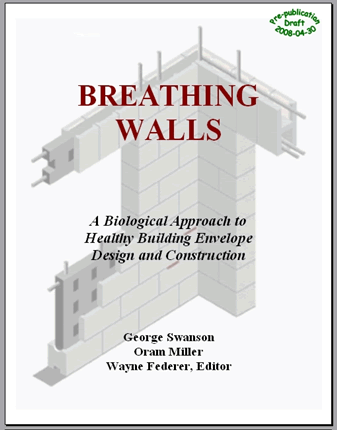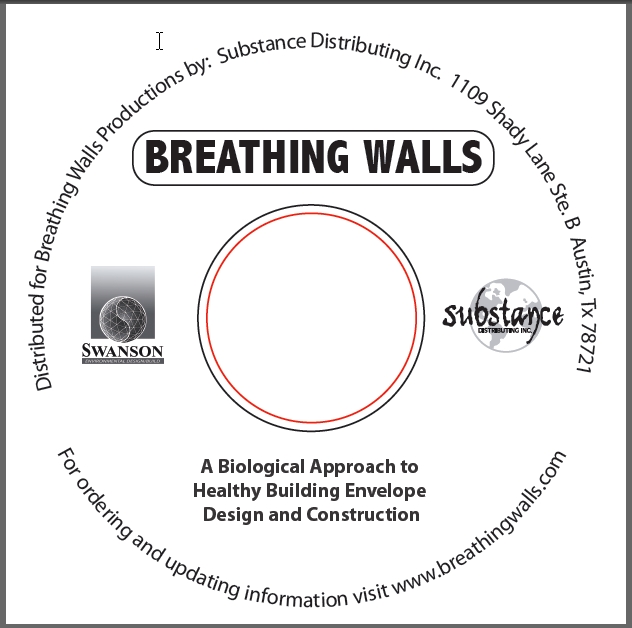Home

|
BREATHING WALLS
A Biological Approach toHealthy Building EnvelopeDesign and Construction
by George Swanson, Oram Millerand Wayne Federer, Editor
Spiral-bound, 304 pagesPre-publication draft, April 2008 |
Breathing Walls offers practical alternatives to conventional modern building practices that keep homes airtight. Walls built today are energy-efficient but cannot handle the inevitable intrusion of moisture, resulting in mold, ill health for occupants and structural damage. Instead of "build tight, ventilate right," we say make your envelope "waterproof but vapor permeable." We work with, not against, the forces of nature.
Healthy, nontoxic alternatives are provided in our manual for building walls, foundations, slabs and roofs that allow moisture to dry out before mold can grow while effectively insulating your house and saving energy. Contractor-friendly choices include various thick, “breathable” materials, including low-density fiber-cement wall forms or blocks, autoclaved aerated concrete (AAC), and wood log. We also offer a thin-wall option that employs magnesia-based boards, a material extensively used in Asia. Detailed protocols explain the application of these materials on the job site.
Written by building biologists, this is a helpful reference manual for builders, architects, designers and homeowners wanting to build green and healthy.
To see comments from our readers, click here.
If you would like to purchase a copy, you may order the print version by clicking here or by clicking on the "Breathing Walls Online Store" button in the upper right hand corner of this page.

For those of you waiting for our eBook and CD-ROM versions, we appreciate your patience. We ran into technical difficulties in June 2008 with the security software, and those versions are on hold for the immediate future. If you want the information contained in our manual now, we suggest you purchase a print version at this time. If you
order a print copy now, a $10 rebate will be applied off the price of the eBook when it does become available.
If you also want the electronic versions in the future, please sign up for notification when the eBook and CD-ROM are ready. If you want to view the cover art, both inside and outside, for the CD-ROM cover when it does become available, click here.
Click any of the highlighted entries below to view sample portions of our manual.

